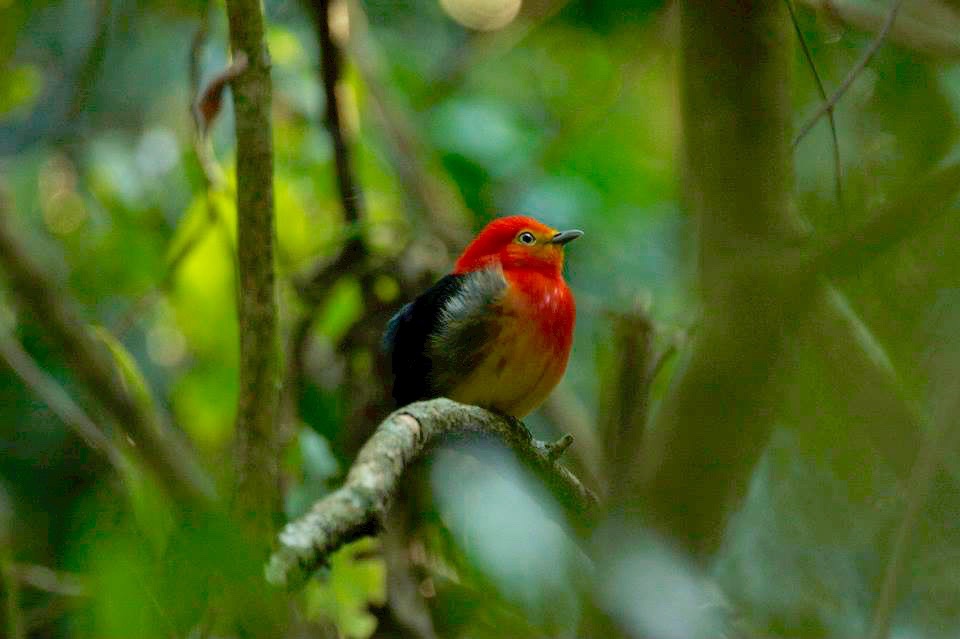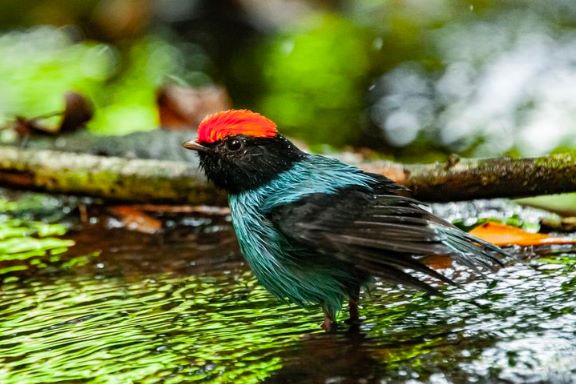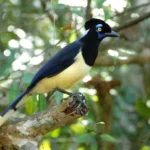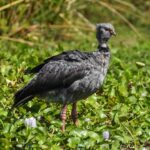
The Band-tailed Manakin (Pipra fasciicauda)
The Band-tailed Manakin is a passerine bird of the Pipridae family. This bird is native to South America (Argentina, Bolivia, Peru, Brazil and Paraguay). Its natural habitats are low and humid forests, swamps and highly degraded tropical or subtropical forests.
Males are bright yellow with black wings and back, red cap and varying red tones on the chest; males also have a white band on the tail, which is more visible in flight. Females are opaque olive yellow with slightly brighter yellow belly. Compared to other female hoppers, females of this species have white eyes and are more yellow, with a more yellowish belly.
The Blue Manakin (Chiroxiphia caudata)
The Blue Manakin, also called swallow-tailed manakin, is a species of passerine bird that is part of the Pipridae family. It inhabits in central eastern South America. It is distributed in the southeast of Brazil, southeast of Paraguay and extreme northeast of Argentina (Misiones and northeast of Corrientes). If you like to do birdwatching in this region, you can contact us and we’ll make a custom tour for you!
The male is deep blue with a red crown and a black head, wings and outer tail feathers. The central tail feathers are longer. On the other hand, the female is olive, lighter below and may have orange forehead (perhaps older), the central tail feathers are only slightly longer. The legs are reddish. The young males resemble the adult female, but gradually develop the red crown, the black of the face, and finally the rest of the adult males’ plumage.

Taken by Emilio White (@white.emilio)
Where to see Band-tailed Manakin and Blue Manakin birds
One of the best places to see them is at La Lorenza, near Iguazu Falls, through half day or full day experiences, combining birdwatching with other activities.
Custom tours in Argentina
In Beyond BA Latam, we offer personalized tours, such as those you can see in our menu or the ones below:
Northwest of Argentina Holidays
Patagonia, Buenos Aires & Iguazu Falls
If you liked this post, you can check our other articles about birds you can find in Argentina.
Therefore, don’t hesitate in contacting us and start planning your next journey!
0














